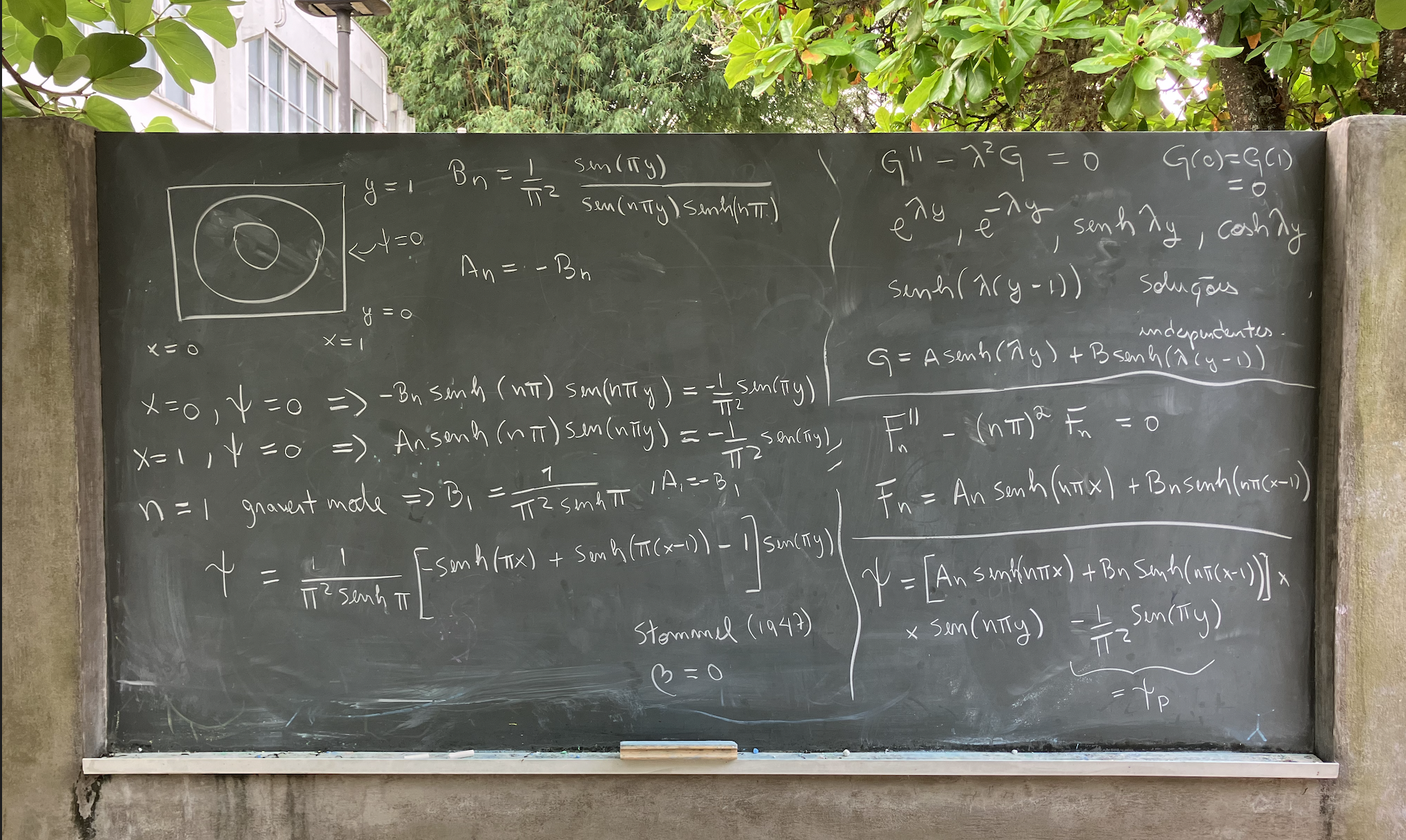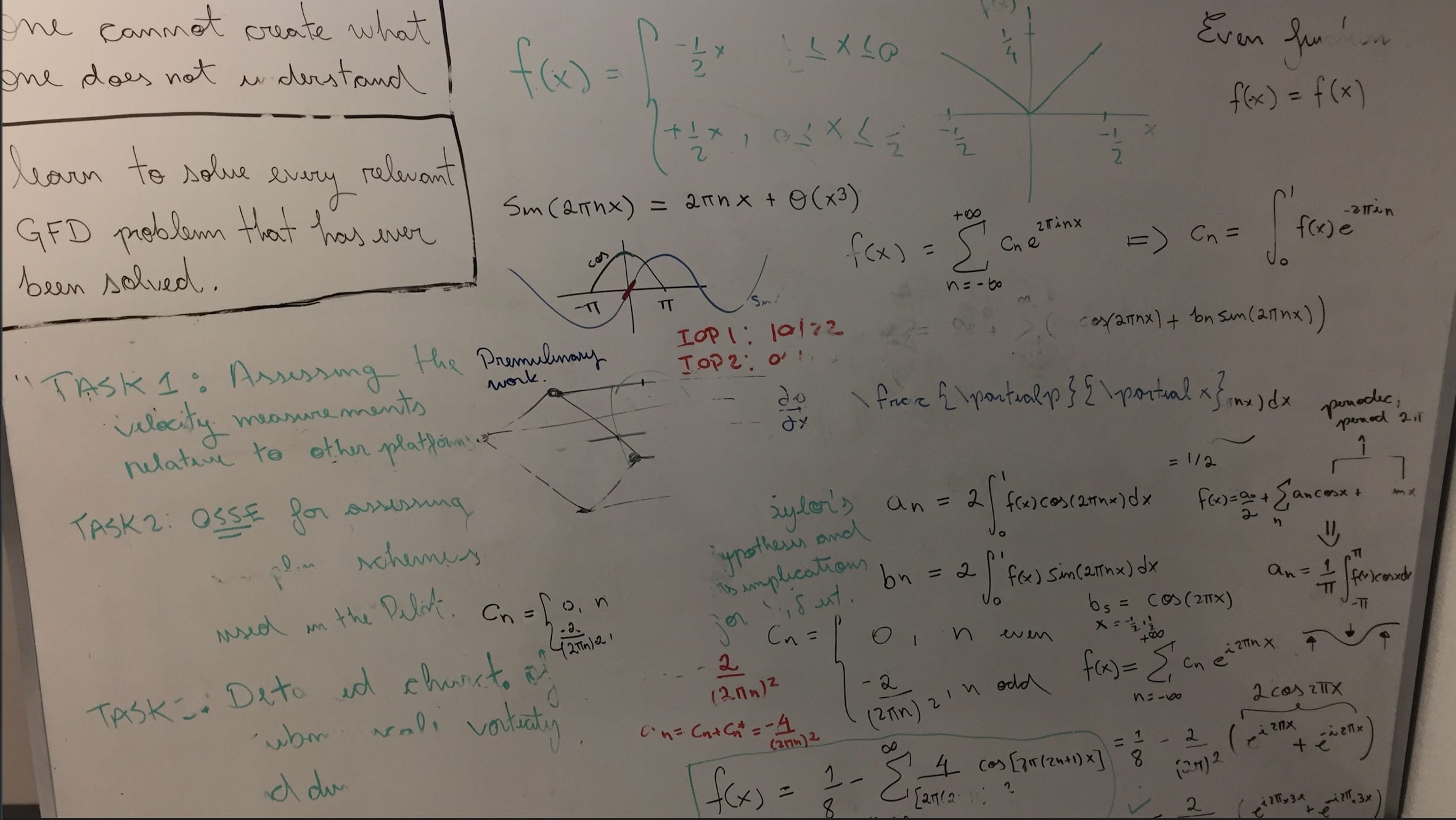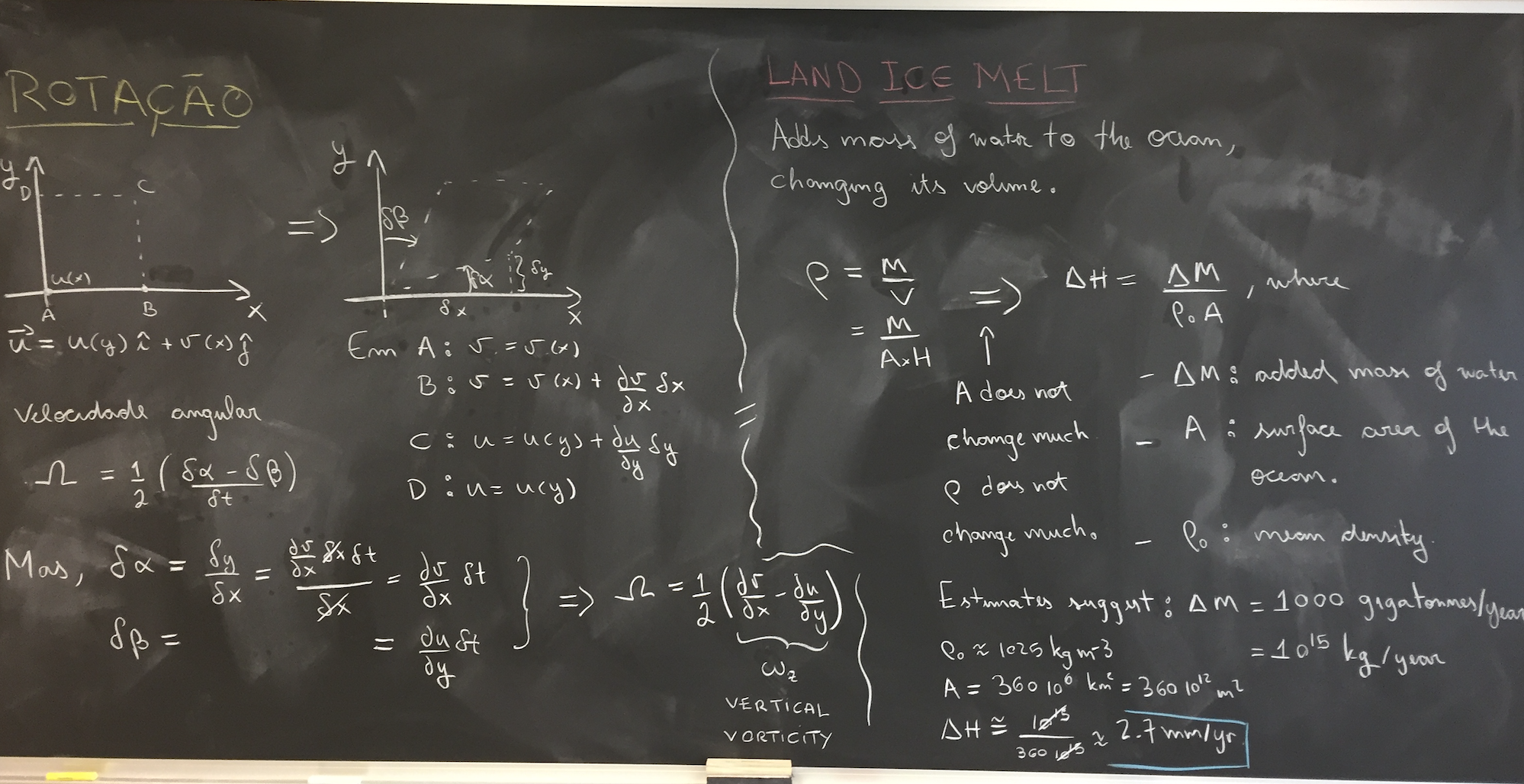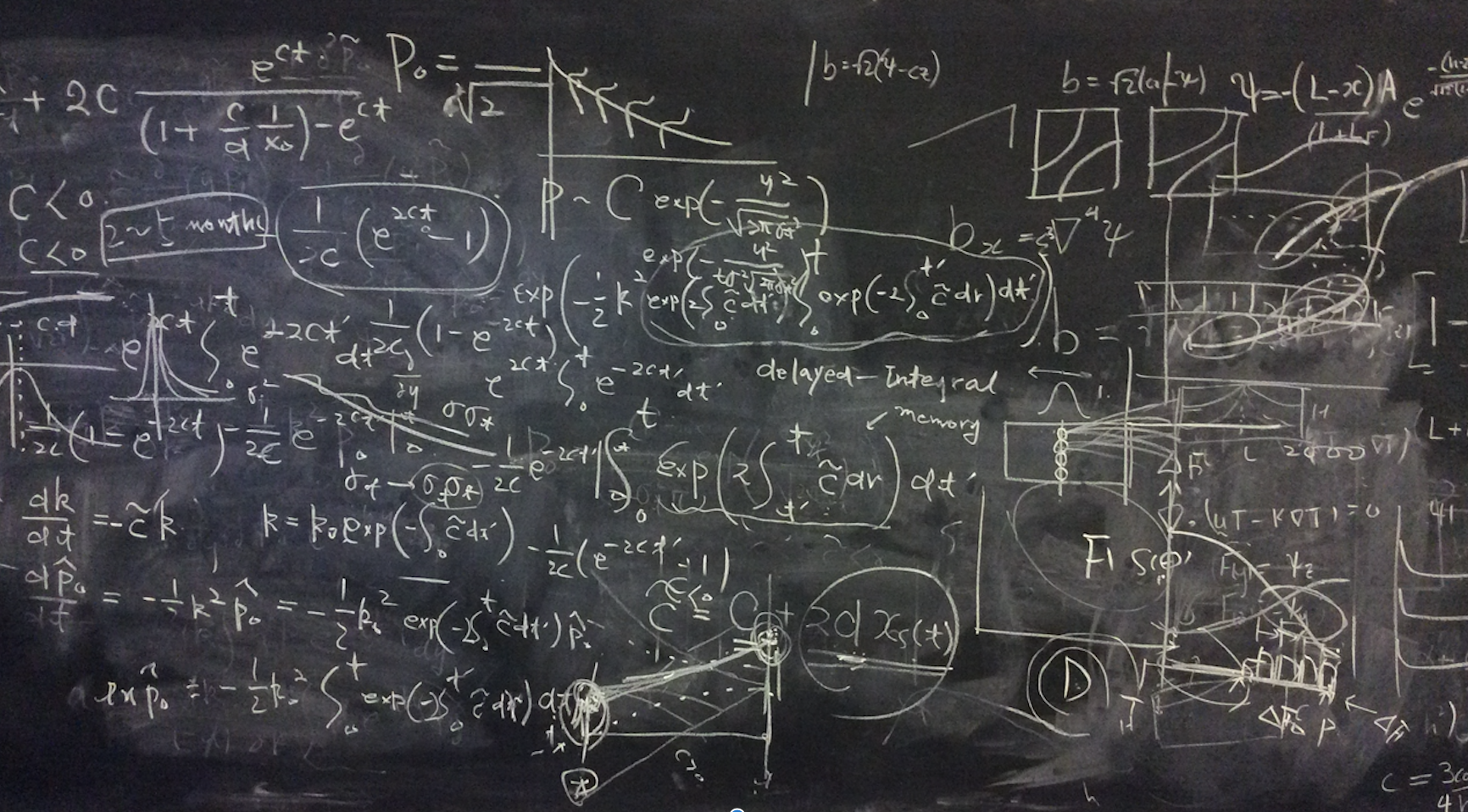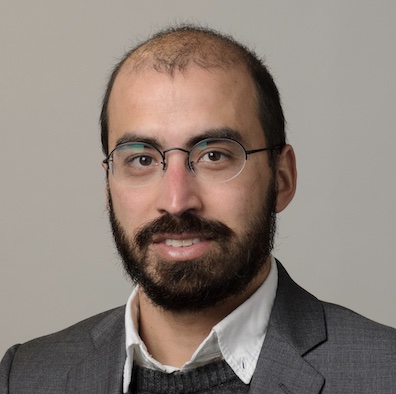One of my heroes, Henry Stommel, wrote in his autobiography:
The discoveries that take place at the
blackboard are usually marked by sudden inspiration. After all, the blackboard
is a social medium, at least two persons are involved, and they get tired
standing before it. This means that the blackboard sessions are relatively
short.
We live in weird times. An increasing number of academics confuse posting and browsing on social media with work. I believe we, as scientists and professors, do not need Twitter, Facebook, Instagram or TikTok. Certainly not for work. (Let institutions take care of outreach.) More than ever, we need synchronous, preferrably in person, truthful social interactions, at seminars, at coffee time, and at the board. In those interactions, learning happens. And there lie the seeds of new discoveries.
Below are a few snapshots of my favorite social media.
Universidade de São Paulo
I recently crossed the street with two Oceanography doctoral students. By crossing the street I mean going to the Math Department, which houses the best outdoor blackboards I've ever found anywhere in the world. We discussed the beta = 0 solution in Stommel's seminal 1948 paper, a solution we hardly see in course notes or textbooks. I particularly like this problem because it gives me an opportunity to talk about a few math tricks to avoid tedious algebra.
University of Connecticut
In 2021 I replaced the old whiteboard in my UConn office with a blackboard (a high
quality Quartet chalkboard). This is the last boardwork on the old
whiteboard from a weekly check-in meeting with Ph.D. student Paban Bhuyan.
On it, a Fourier series from a teaching session with Paban and some brainstorming
of tasks for Paban's dissertation. On the top left, two quotations
to keep us humble. They paraphrase messages on Feynman's last board.
On the left, the remnants of a session with a Brazilian colleague on the
relationship between vorticity and angular velocity (the classical
example of the distortion of an infinitesimal material line by a laterally
varying flow). On the right, the boardwork from an office hours session with a
student in my undergrad course, in which we did a quick-and-dirty
estimation of sea-level rise
due to continental ice melt.
Morning espresso time in the lab provides a good opportunity to teach students
some GFD. In this session, we briefly discussed PV conservation in the single-layer
flat-bottomed shallow water model. On the top left, a reminder that whiteboards suck: the remnants of the
heading of an S-MODE Pilot planning session defy dry-erasing.
Woods Hole Oceanographic Institution
This is a picture I took in Summer 2015 from a blackboard at the back of the main room at Walsh Cottage, which houses the Geophysical Fluid Dynamics Program every Summer since 1959. The board filled up with scribbles of equations over a few days of brainstorming sessions among several people, some of the brigthest scientists I've ever met. The topic of 2015 GFD Summer Program, of which I was a fellow, was Stochastic Processes in Atmospheric and Oceanic Dynamics.
Scripps Institution of Oceanography
In 2015, while I was a graduate student at Scripps, my advisor bought a chalkboard for my office at Keck Research Center. We found this green one at sale for USD 50 at the UCSD Surplus Store, a real bargain. The picture captured our first session at this chalkboard, in which we discussed the so-called Nakamura method for estimating an effective difussivity.
